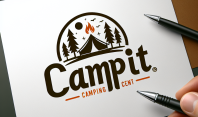Camping and tenting are enjoyable outdoor activities that bring people closer to nature, allowing them to escape the hustle and bustle of everyday life. However, its important to remember that safety should always be a top priority when spending time in the great outdoors. One crucial aspect of camping safety is campfire safety, as improperly controlled fires can easily get out of hand and cause significant damage to the surrounding environment, as well as put campers at risk of injury.
Here are 10 essential campfire safety guidelines for tenting and camping sites to help you enjoy a safe and unforgettable outdoor adventure:
1. Check for Fire Bans: Before starting a campfire, always check for any fire bans or restrictions in the area you will be camping. Some regions may have a complete ban on campfires due to dry conditions or high fire risk levels. Its important to always adhere to these regulations to prevent accidental wildfires.
2. Choose a Safe Location: When selecting a spot for your campfire, choose a clear area away from any overhanging branches, dry grass, or other flammable materials. Opt for designated fire pits or areas if available, and clear a radius of at least 10 feet around the fire site.
3. Use a Fire Ring or Pit: If possible, build your fire in a fire ring or pit. These structures help contain the fire and prevent it from spreading uncontrollably. If no fire ring or pit is available, create a circle of rocks to serve as a barrier for the flames.
4. Keep a Water Source Nearby: Always have a bucket of water, a hose, or a fire extinguisher nearby when starting a campfire. This can be crucial in case the fire starts to spread or gets out of control. Make sure to fully extinguish the fire before leaving the site or going to bed.
5. Never Leave the Fire Unattended: Its essential to never leave a campfire unattended, even for a short period. An unattended fire can quickly grow in size and pose a significant risk. Always designate someone to monitor the fire and ensure it remains under control.
6. Avoid Using Flammable Liquids: Do not use flammable liquids, such as gasoline or lighter fluid, to start or accelerate a campfire. These substances can cause the fire to flare up unpredictably and increase the risk of injury. Stick to using matches, lighters, or fire starters to ignite the fire.
7. Build a Proper Fire: When building a campfire, start with small sticks and tinder at the base. Gradually add larger pieces of wood as the fire grows. Avoid stacking wood too closely together, as this can prevent proper airflow and cause the fire to smolder, producing excess smoke.
8. Follow Campground Regulations: If you are camping at a designated campground, be sure to follow any specific campfire regulations set by the campground or park authorities. Some campgrounds may have restrictions on the size and type of fires permitted, as well as designated quiet hours for campfires.
9. Respect Wildlife and Nature: Be mindful of the impact your campfire may have on the surrounding wildlife and environment. Avoid burning plastics, food scraps, or other non-biodegradable materials, as they can release harmful toxins into the air and soil. Always clean up your campfire site before leaving to minimize your environmental footprint.
10. Know How to Safely Extinguish a Fire: When it is time to extinguish your campfire, do so safely and thoroughly. Use a shovel to spread out the embers and ashes, then douse the fire with water until it is completely out. Stir the ashes and embers to ensure all hot spots are extinguished before leaving the site.
By following these 10 essential campfire safety guidelines for tenting and camping sites, you can enjoy a safe and responsible outdoor experience while minimizing the risk of accidents and wildfires. Remember, it only takes a single spark to ignite a dangerous blaze, so always practice caution and prioritize safety when enjoying campfires in the great outdoors.


leave a comment